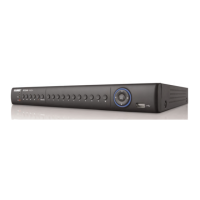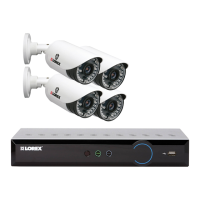What to do if there is no picture on monitor/TV after connecting it to Lorex DVR?
- JJason HansonAug 13, 2025
If there's no picture on your monitor/TV after connecting it to the Lorex DVR, try these steps: * Power off the monitor/TV and the DVR, then power on the monitor/TV first, followed by the DVR. * Make sure the monitor/TV is set to the correct input channel for the DVR. * Check that the video cable is securely connected to both the DVR and the monitor/TV. * If the resolution is incorrect, press and hold the '?' button on the DVR's front panel until it restarts. This will reset the DVR to the default resolution (1024x768).













